Some examples of an early 16th century Hemd (smock, chemise), with a trapezoidal neck and embroidered front band, suitable for a middle class German woman.
I made my first version of this style in 2000 and have since made several more, to wear with my early 16th century German wardrobe. They provide good sun protection on the back of the neck – and an opportunity for embroidery.

Research and Design
I came across my first example of this style in an art book – the Holbein portrait of a 34 year old Woman. I loved many things about the image, including the embroidery, and determined to make the whole outfit. It took a few tries to get the Hemd working well, by which time I no longer fitted the Rock (sigh).
In the meantime, I found several more images showing this style of Hemd with a trapezoidal neckline, with and without embroidery and front gathering, worn by middle class women in the 1510s.


Source: The Metropolitan Museum
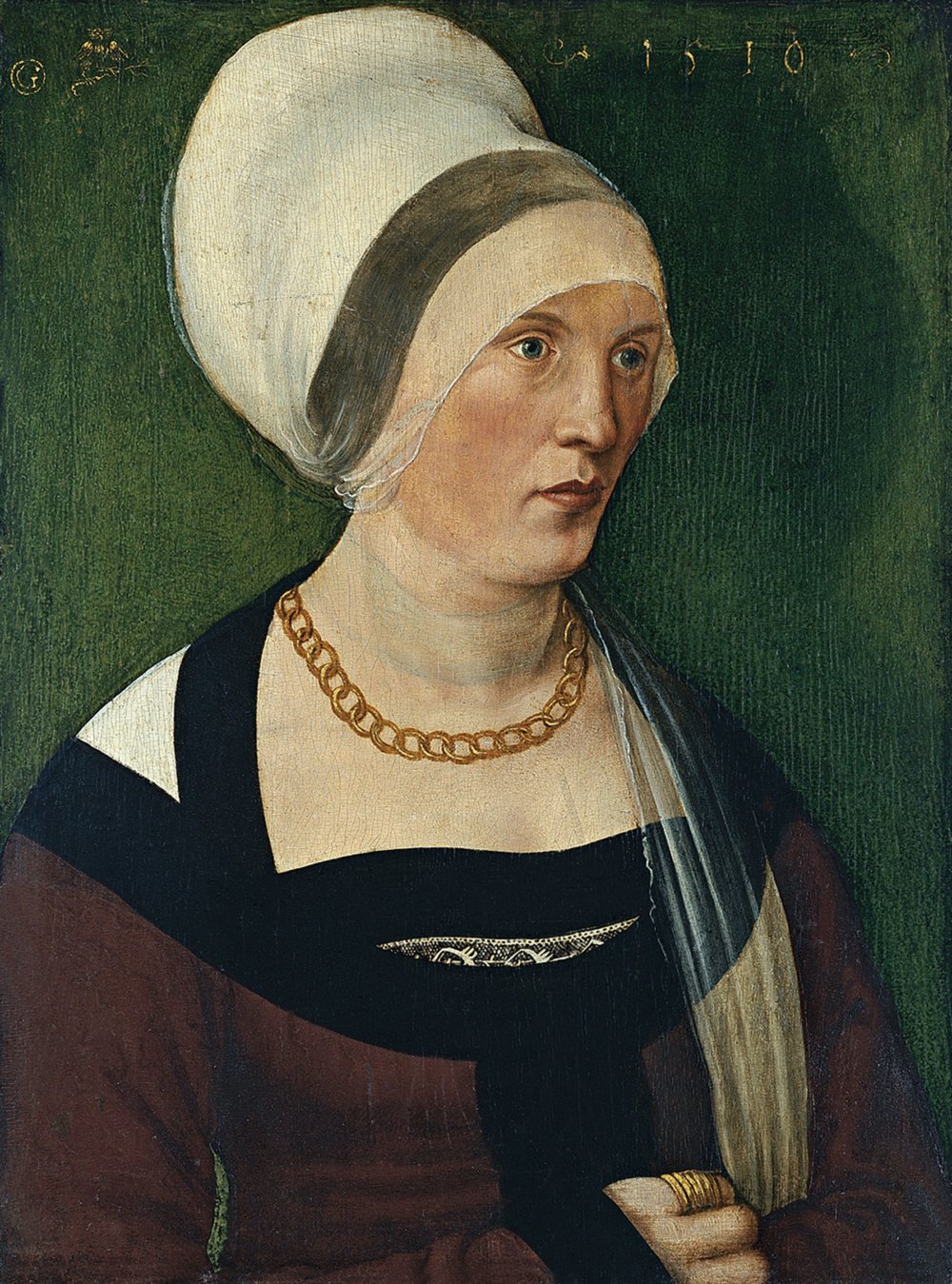
Source: Thyssen-Bornemisza
Textiler Hausrat (1990) details many different styles of Hemd, but does not include images or descriptions of this style, although it clearly fits into the Frauenhemd (woman’s smock) group. Curious, I searched further and found examples from 1497 to 1540, and from lower to upper class, although middle class was certainly the most common.
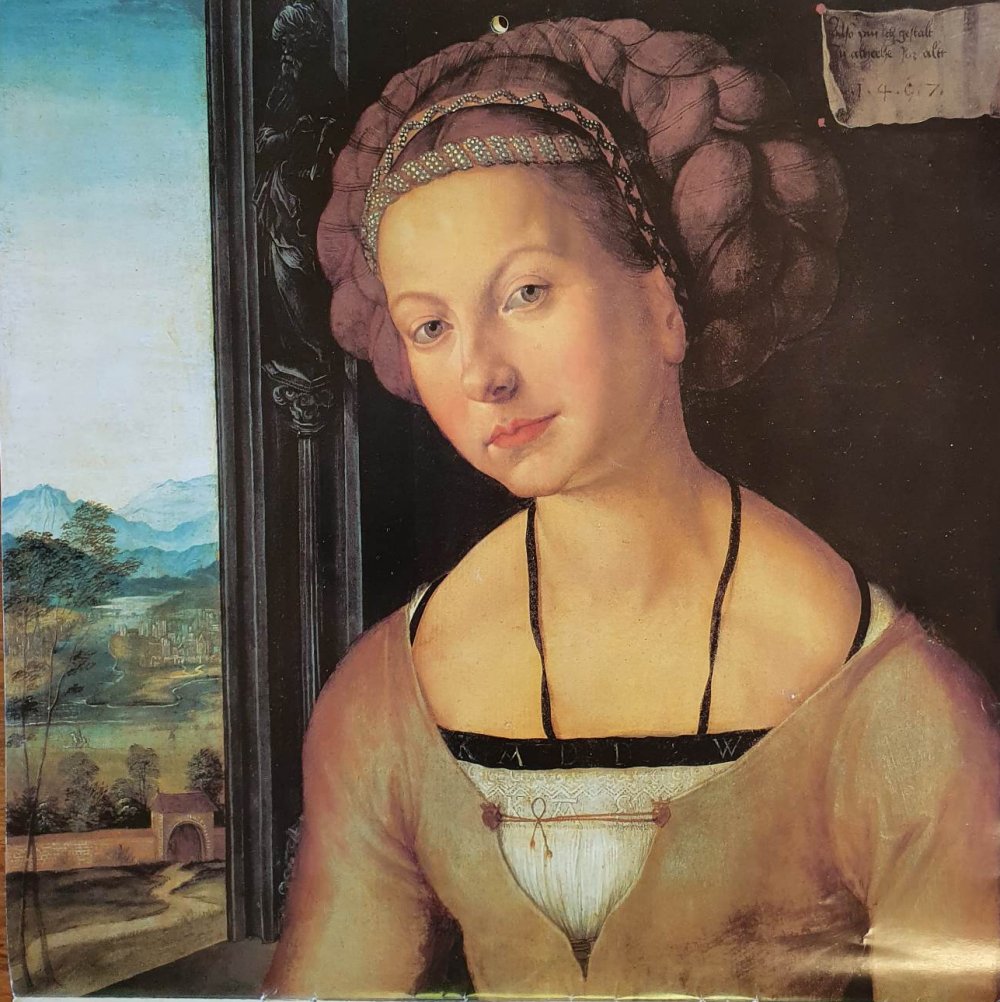

Source: Wikimedia
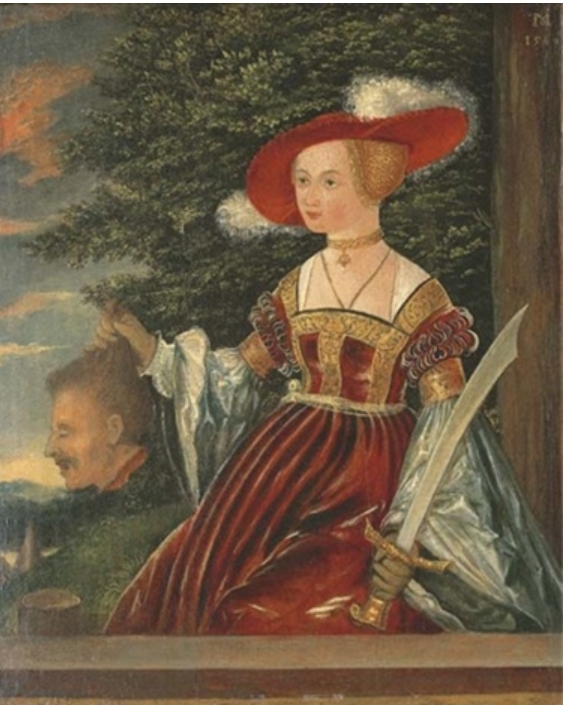
The cut is unusual – the back and shoulders look cut on the straight, with no gathers. The front section is often heavily gathered, with a separate embroidered band, and/or embroidery over pleats (smocking or pattern-darning). The neckline may be plain or have a contrast binding.
A late 15th century painting by Derick Baegert shows a Hemd with plain panels over the shoulder and a gathered and smocked front panel, but the seam arrangement leads to a rounded neckline. Patterns of Fashion 4 (2008) shows several late 16th century Italian smocks with separate shoulder pieces, giving a straight neckline.


Source: Arnold (2008)
My pattern combined these ideas to get the effect I was after.
Construction
I made a test version first, with no gathering on the front panel. I made it out materials on hand – fine cotton lawn, and a recycled piece of cross-stitch embroidery in an appropriate pattern (on Aida cloth – it was an early practice piece!).
I sewed the shoulder sections to the front and back, then sewed on the arms an underarm gussets. Once the constructed, I sewed a wide black linen band to the neck opening, then turned it to the inside, folding in the corner mitres and sewing them down. Then I sewed the embroidered strip underneath the black edge.
Although only a test run, it worked well enough to stay in active use for many years. Despite my annoyance at the Aida cloth and lack of pleating, I wore it until it wore out (as you do).
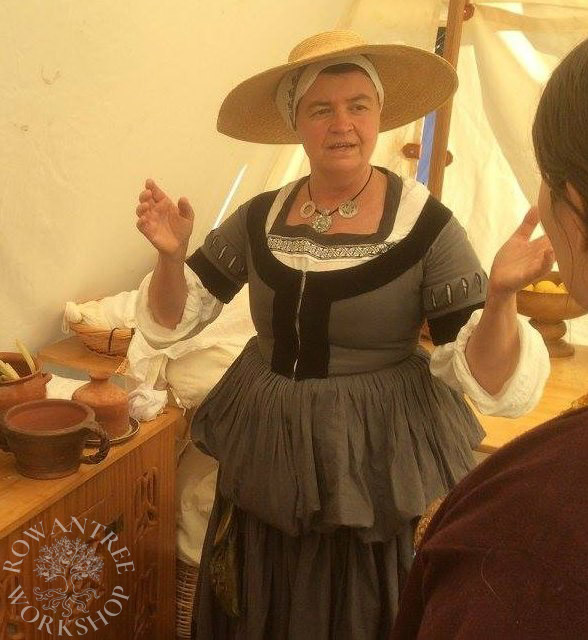

Version 2
With the ‘proof of concept’ in use, I made a real version, this time in shirtweight linen and with a heavily gathered front panel.

I gathered the front to a depth of 12cm using my new smocking pleater, stabilised the pleats with double rows of double stemstitch along the back of the pleats and then removed the smocking drawthreads.
I worked the embroidery in black silk on a trip of 32 count linen, based on a design from Schönsperger’s 1529 modelbook. I was hoping to get a rounded top edge like the Holbein painting, so I trimmed the top of the pleated front into an arc, then bound the top edge with the embroidered linen strip.
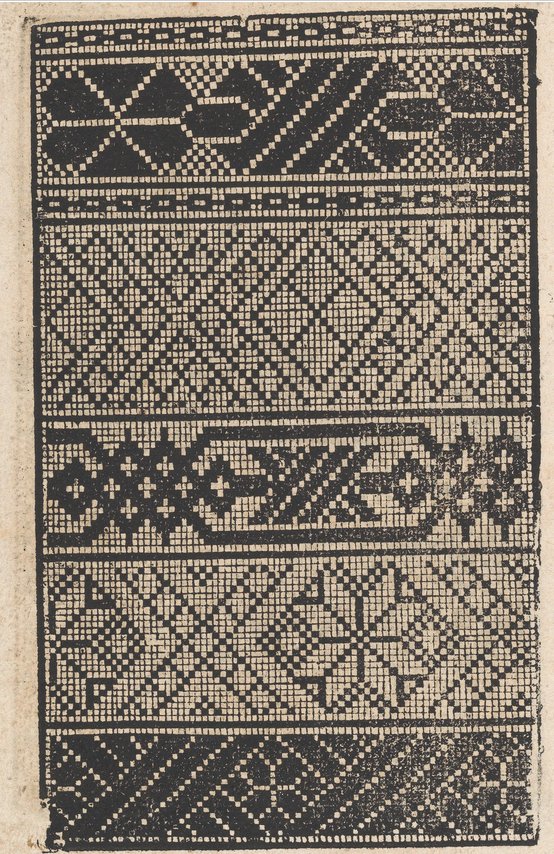
Source: The Metropolitan Museum
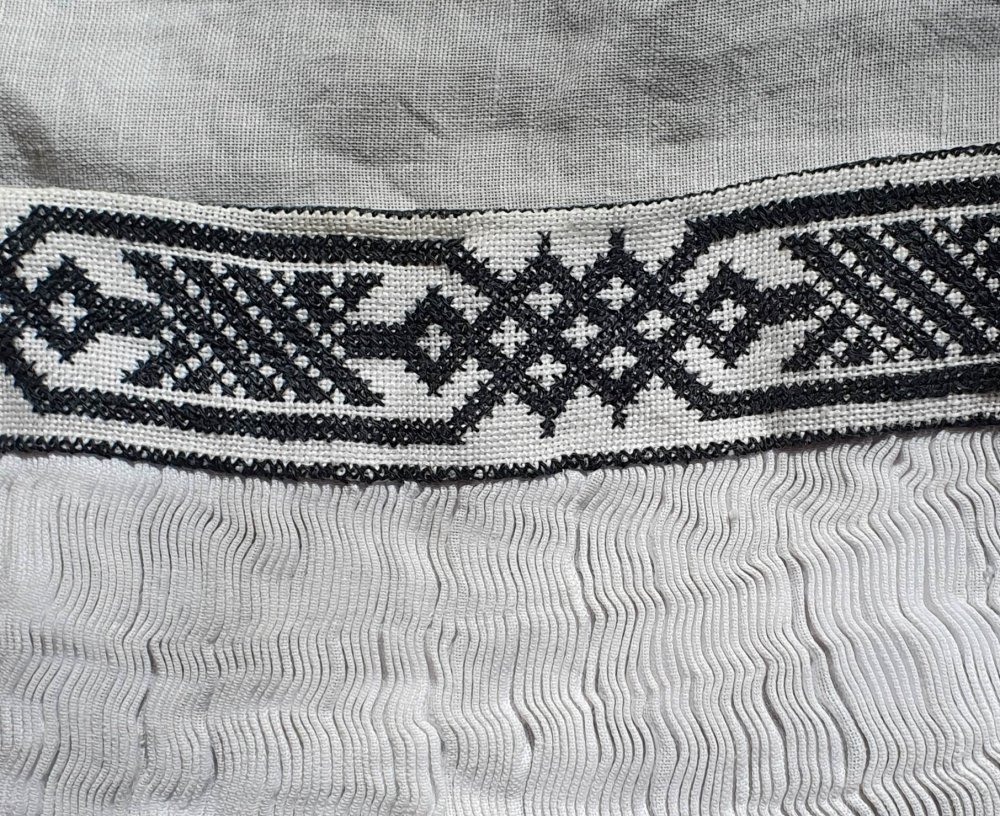
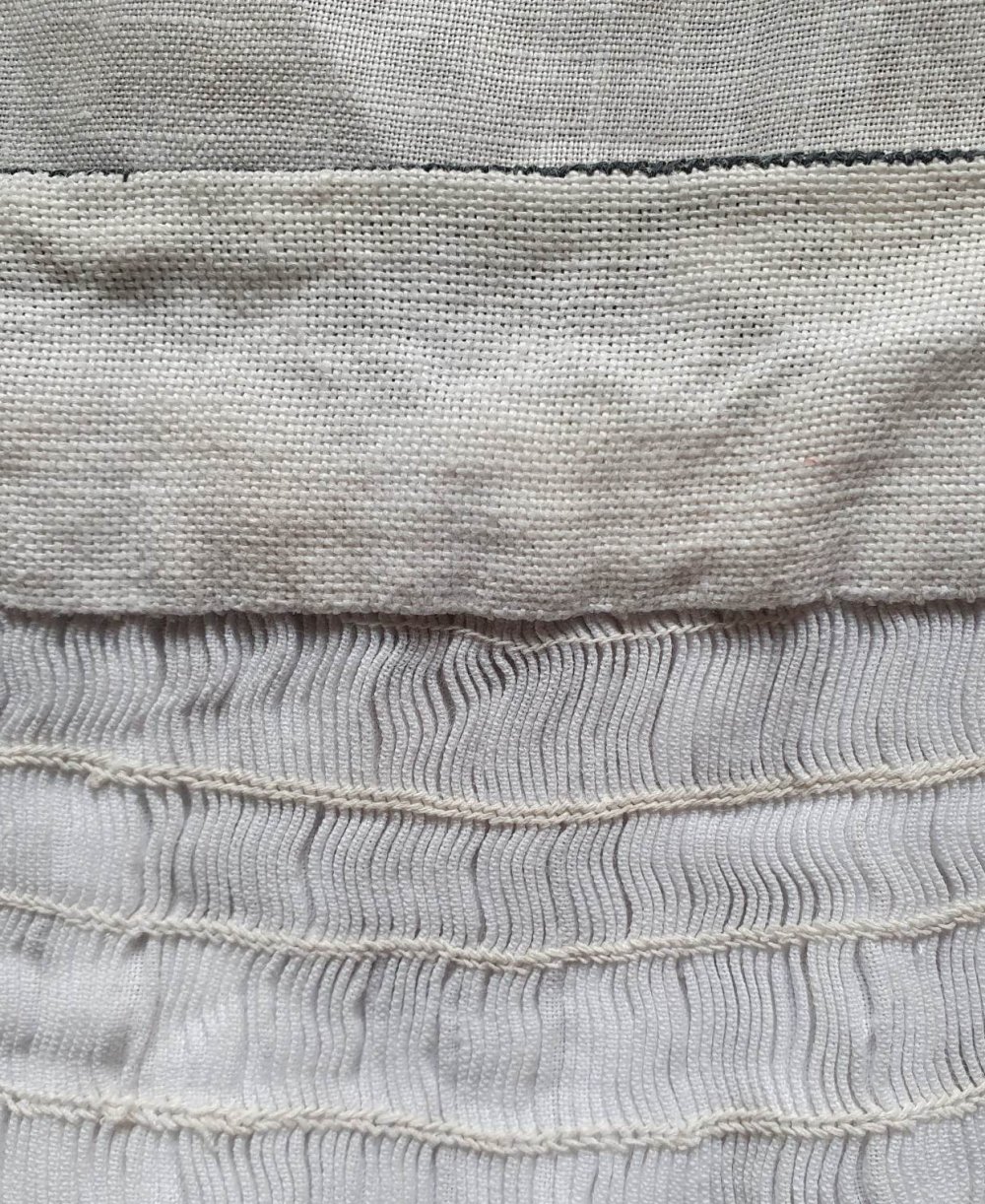
The Hemd was constructed using run and fell seams (machine sew, hand fell). I sewed the shoulder pieces to the back and then bound the neck edge with a narrow black strip of black linen. Then I sewed this to the front panel, hiding the binding edge. I added the sleeves and underarm gussets, and hemmed the cuffs and hem.
The back panel is narrow (only shoulder width) but the highly gathered front compensates and provides enough room overall to be comfortable. My attempt to made the front panel arch up did not work, but the Hemd still worked well and looked good.
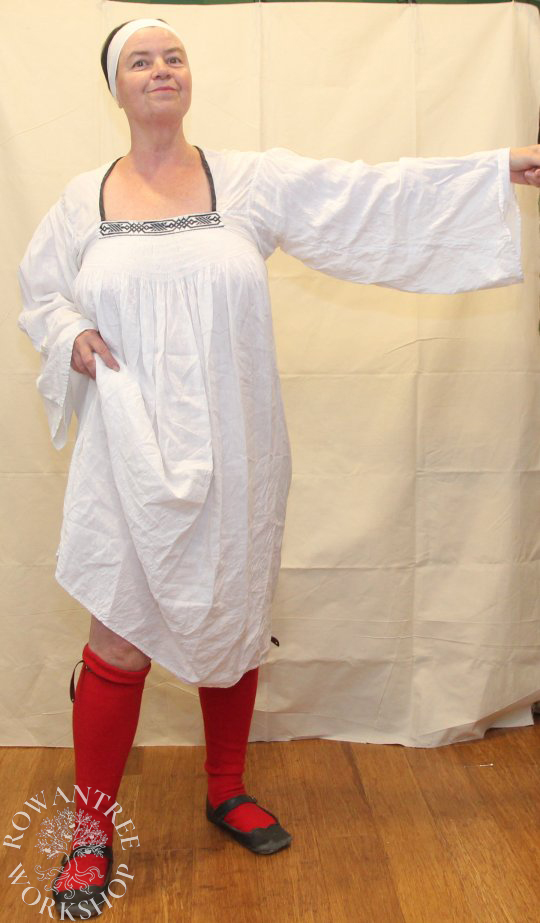
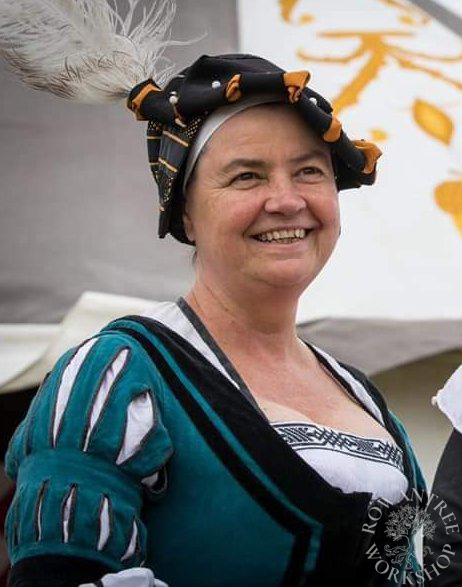
Version 3
I made a third version using a different pattern from Schönsperger’s modelbook and a straight smocked front (the curving idea had not achieved anything in the previous version).

Source: The Metropolitan Museum
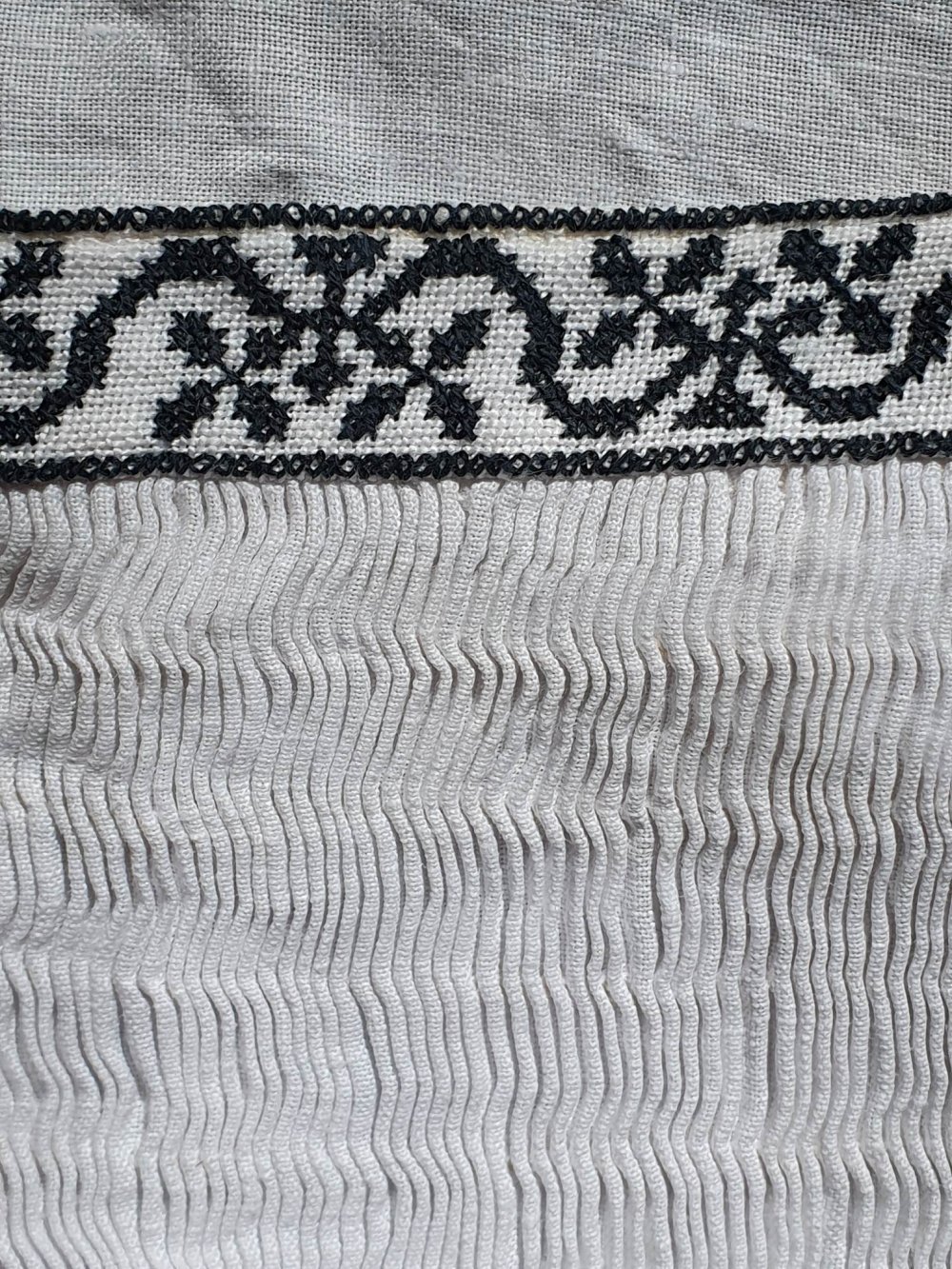
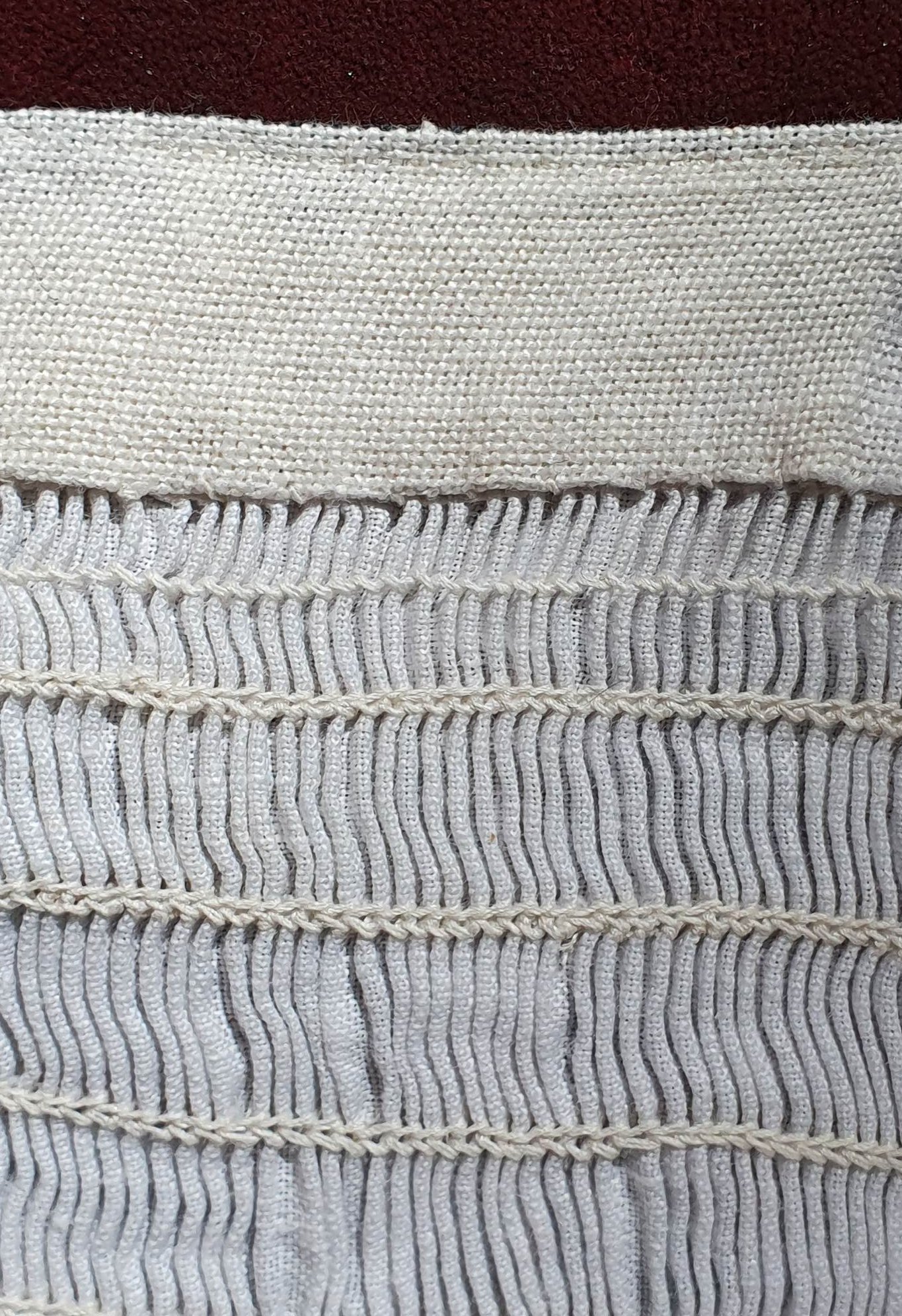
These Hemden have been in constant use since I made them – well worth the effort!
Afterthoughts
I wore the first ‘test’ version for many years, until it finally wore out (of course).
The second one wore out along the back of the neck – I repaired it by unpicking the worn top section and replacing it with new linen, and then sewing the binding back on. After a year back in service, I now need to replace the front shoulder panel – should have done them both at the same time.
Since making these, I’ve become a convert to long-armed cross-stitch – a much more common technique at the time (also, faster and a more solid result). So the next time I make one, I’ll be using that technique instead of simple cross-stitch.

